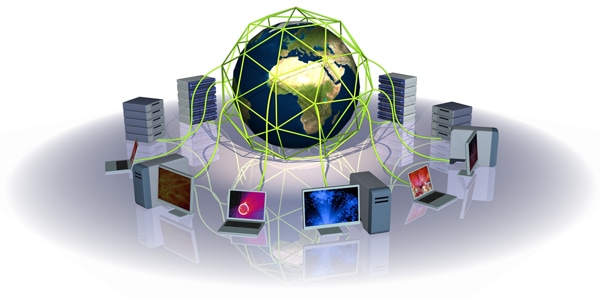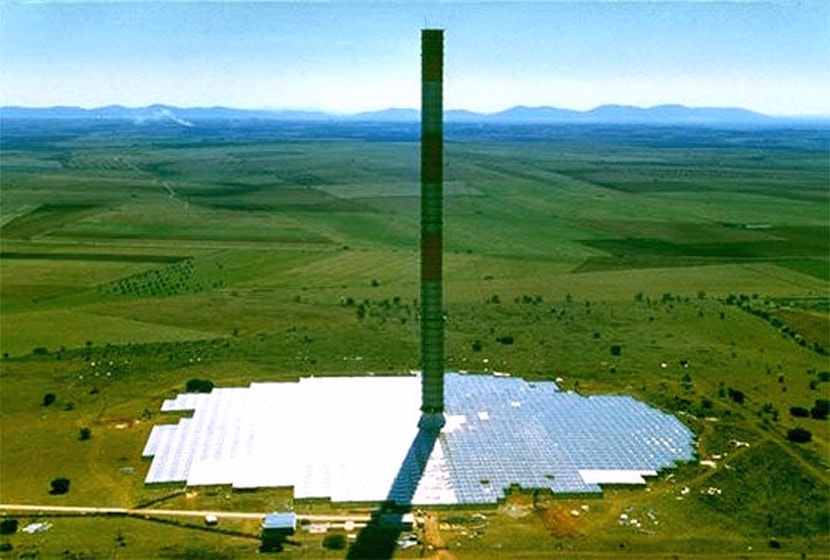Based on Joël de Rosnay's Chronicles on the Swiss Up website, made as predictions in the years 2002-2003, UP' Magazine proposes to retranscribe them here week by week, for a little reflection on the time that has passed. Was he right?
Computer revolutions are often being prepared behind the scenes in large laboratories. This time, however, a very important application has just seen the light of day and is spreading rapidly across the planet, imitating the start of the "web" but on a scale that is out of all proportion to the Internet phenomenon: grid computing or distributed computing.
The first applications started ten years ago. Laboratories sought to connect their computing power to perform complex and heavy calculations requiring large amounts of processing. The big press echoed programs such as the Seti project, for the parallelization of microcomputers on the Internet for extraterrestrial intelligence research, or genomics research as part of the Telethon project.
But the main problems lay in the software that made it possible to find the available resources according to the problems posed, to distribute the required power, to ensure the queues of users and above all the security of uses. These problems have largely been solved recently thanks to the Globus toolkit software, an open global standard, similar to Linux for free software. Tasks are broken down into small pieces that can be processed independently and then reorganized.
What is the purpose of grid computing?
Dealing with computer problems with unrivalled power and cost by sharing computers and equipment through high-speed Internet. In both Europe and the United States, distributed computing is becoming increasingly popular in the life sciences sectors (pharmaceuticals and bioinformatics), where the discovery of new drugs depends on the efficiency of collecting and analysing very large volumes of genomic and proteomic data.
Thus the company Monsanto can perform genetic analysis in a single day instead of six weeks and without the use of computers costing tens of millions of dollars. Competition is tough with Aventis, Smith Kline and Glaxo who also use distributed computing for cancer and AIDS research. Companies specializing in online games such as Butterfly.net handle tens of thousands of players at the same time. Car manufacturers like GM and Ford use grid computing to analyze crashes in real time. Small businesses pay $25,000 for software and services that provide computing power once obtained by a $30 million supercomputer.
Computer technology thus becomes analogous to a subscription-based distribution "utility" such as water, gas or electricity. With computing grids, the processing power of computing resources, memory, storage and network bandwidth can be directed where they are needed each time.
All the major manufacturers have developed grid computing programs: Compacq, Cray, Silicon Graphics, Fujitsu, Hitachi, Nec. IBM, in agreement with Globus, intends to provide grid applications on its next machines and build vast networks. Sun Microsystems, a pioneer in this field, offers free online distributed computing software. Projects are being organized on a global scale: the European Data Grid, Unicore, Grid Physics Network. But the most impressive thing is TeraGrid launched this year by the NSF (National Science Foundation US) and which will bring together four university sites, creating a "virtual meta-computer" working at 13.6 teraflops per second, 8 times faster than the most powerful computer known.
In the near future, grid computing will blend naturally with Web services and peer-to-peer (exchange of information over a network, from individuals to individuals), giving companies and Internet users computing power that will transform the Web into a parallel macro-computer. Not forgetting microgrids, (micronodes) interconnecting millions of smart-tags, biosensors, PDAs and intelligent objects, into a global nervous system. Humans are building the computing infrastructure of the 21st century: a truly planetary brain.
Chronicles by Joël de Rosnay on the Swiss Up website / Predictions 2002-2003 on Wifi, RFID, the future of Google, Grid computing, the student of the future (Crossroads of the Future)
{Jacuzzi on}












